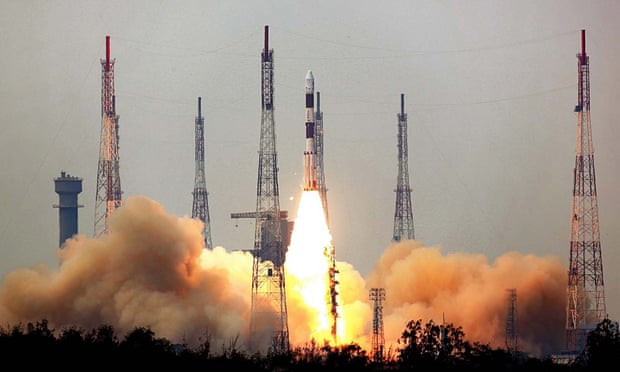This is a good news. Now, we have another set of eyes in the space looking out for us.
---

India successfully launched its first hi-tech telescopes into space to study the stars, as New Delhi seeks to take another step in its ambitious space programme.
A rocket carrying the 1.5-tonne mini space observatory, called Astrosat, along with six foreign satellites, blasted off on schedule from India’s main southern spaceport of Sriharikota on Sunday.
“About 20 minutes after a perfect lift-off at 10am from our spaceport, the rocket has placed Astrosat in the intended orbit,” mission director B Jayakumar said at Sriharikota, about 55 miles from Chennai.
The launch comes a year after India became the first Asian country to send a successful mission to Mars to study the planet, beating rival China and sparking an outpouring of national pride. The unmanned probe, still orbiting Mars, cost a fraction of the missions launched earlier by the US, Russia and European countries.
India’s Astrosat, which includes a telescope that uses X-rays, is expected to orbit 400 miles above the Earth and will study parts of the universe, including black holes and the magnetic fields of stars.
Astrosat, which reportedly cost 1.8bn rupees (£17.7m) to build, has been compared by local media to the Hubble telescope launched by Nasa in 1990. However, Astrosat is much smaller and has a lifespan of five years. The rocket also carries six foreign satellites, including one from the US.
The launch came as the prime minister, Narendra Modi, wound up a visit to Silicon Valley in the US, where he urged top technology companies to bring investment and jobs to India.
India’s successful and frugal Mars mission dominated newspaper front pages at the time and sparked huge pride in its home-grown space programme, while Modi hailed it as a sign of the country’s technological potential.
• This article was amended on 29 September 2015. An earlier version said that Astrosat weighs 150, rather than 1.5 tonnes.
India successfully launches first hi-tech telescopes into space
---

India successfully launched its first hi-tech telescopes into space to study the stars, as New Delhi seeks to take another step in its ambitious space programme.
A rocket carrying the 1.5-tonne mini space observatory, called Astrosat, along with six foreign satellites, blasted off on schedule from India’s main southern spaceport of Sriharikota on Sunday.
“About 20 minutes after a perfect lift-off at 10am from our spaceport, the rocket has placed Astrosat in the intended orbit,” mission director B Jayakumar said at Sriharikota, about 55 miles from Chennai.
The launch comes a year after India became the first Asian country to send a successful mission to Mars to study the planet, beating rival China and sparking an outpouring of national pride. The unmanned probe, still orbiting Mars, cost a fraction of the missions launched earlier by the US, Russia and European countries.
India’s Astrosat, which includes a telescope that uses X-rays, is expected to orbit 400 miles above the Earth and will study parts of the universe, including black holes and the magnetic fields of stars.
Astrosat, which reportedly cost 1.8bn rupees (£17.7m) to build, has been compared by local media to the Hubble telescope launched by Nasa in 1990. However, Astrosat is much smaller and has a lifespan of five years. The rocket also carries six foreign satellites, including one from the US.
The launch came as the prime minister, Narendra Modi, wound up a visit to Silicon Valley in the US, where he urged top technology companies to bring investment and jobs to India.
India’s successful and frugal Mars mission dominated newspaper front pages at the time and sparked huge pride in its home-grown space programme, while Modi hailed it as a sign of the country’s technological potential.
• This article was amended on 29 September 2015. An earlier version said that Astrosat weighs 150, rather than 1.5 tonnes.
India successfully launches first hi-tech telescopes into space

